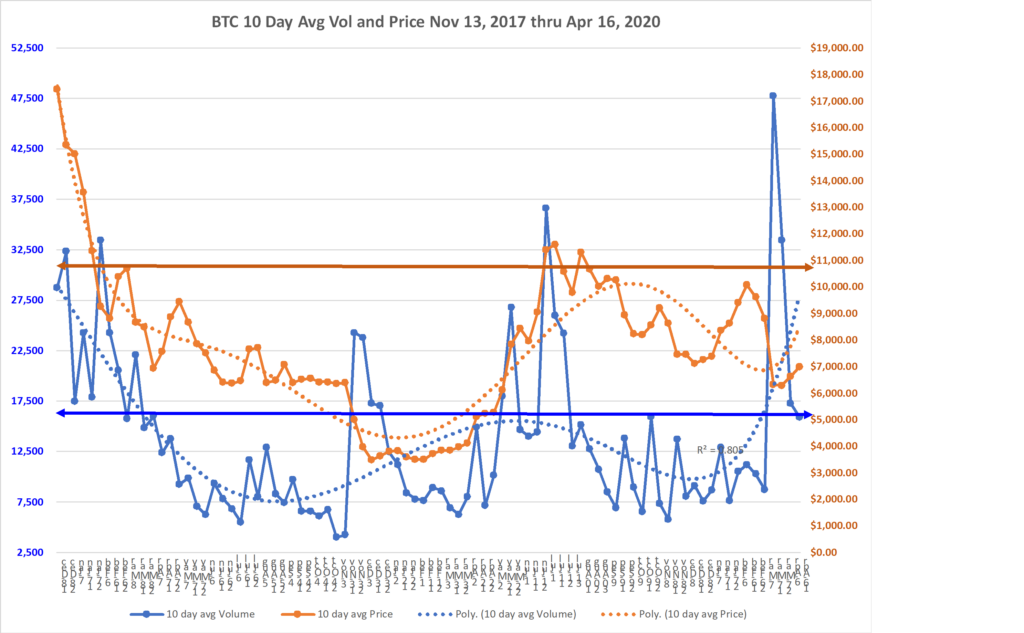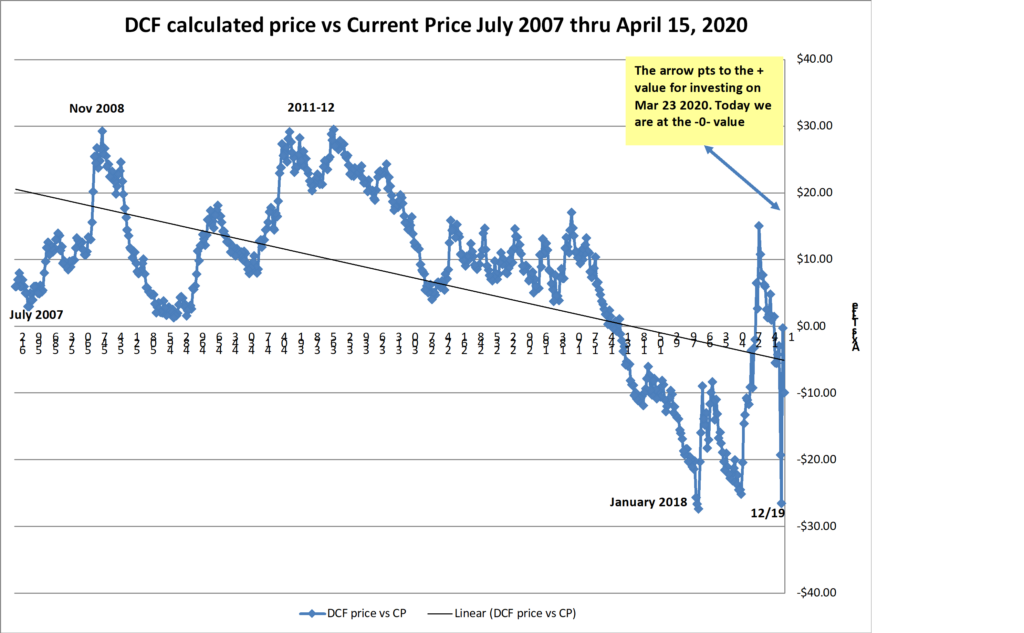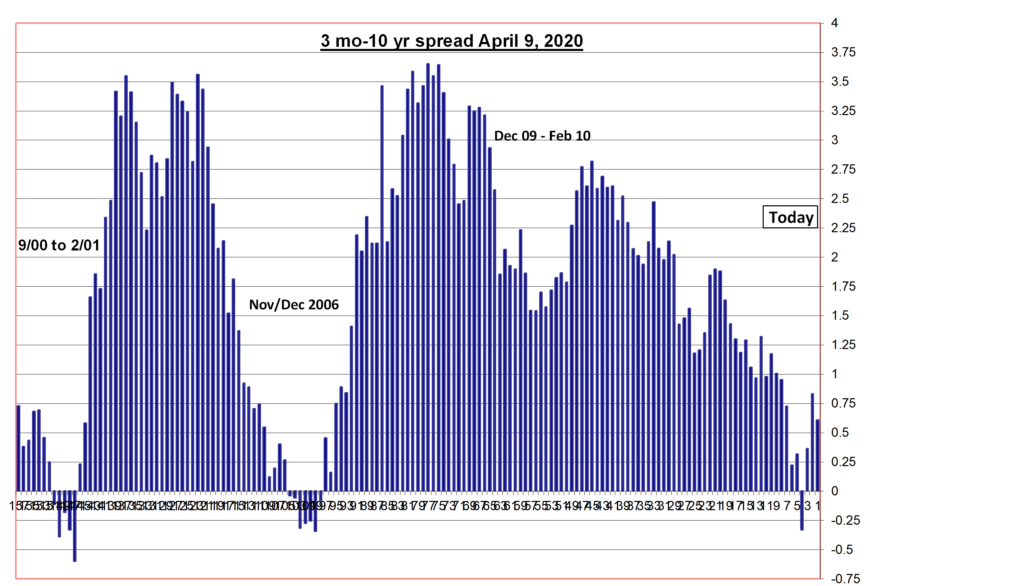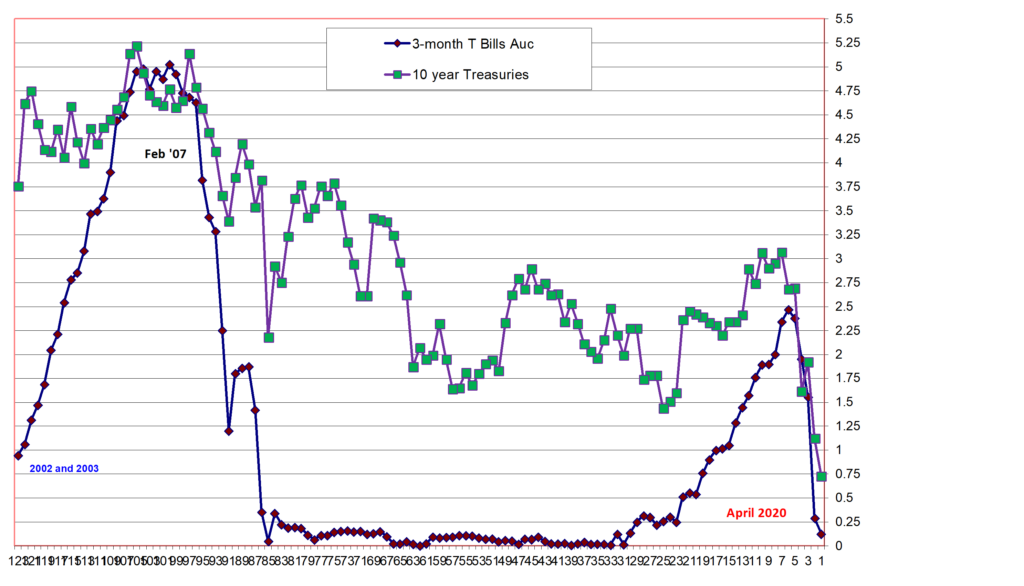April 20, 2020
This is a date that will be recalled for years to come. It is the day a barrel of oil on the Futures exchange for May delivery went negative. Last check, an oil producer would have to pay you $37 per barrel for you to take delivery.
I am going to write at the moment in a sense of free association and will ultimately edit this down to something more well thought out.
Like the coronavirus, this is an event never imagined or experienced. There is so much oil being produced that there is no storage facilities left to take the oil. Physical supply is greater than physical demand on the Spot market. The rate of supply will continue to exceed demand for the near-term and looking out to May, the market makers see no growing demand, no meaningful reduction in production, and a net current supply plus future production that has no place to go.
I remember being in the audience in the year 1985 when Leon Hess, the founder of Hess Oil, ranted about the Futures market as a weapon of destruction and irrationality. His point was that each day more oil traded on the Futures Exchanges than existed in the ground, and to him that made no economic sense and merely represented gambling. Well it took a long time, but maybe he is about to be proven correct.
Supply and demand should not result in negative prices. Suppliers produce to meet demand at a given price. Buyers take oil at a given price to refine into by-products such as gasoline and jet fuel that are priced based on usage demand. Suppliers have been taught that they may hedge the oil in the ground by selling it on the Futures market for future delivery. That makes sense, except that the futures market also allows non-producers and non-users of oil to “bet” on the changes in the price of oil by buying and selling futures contracts for profit. This creates an artificial component of pricing, and in a crisis when contracts need to be unwound, the holders of long futures contracts must get out at any price as the price falls, and this accelerates the price decline as more sales occur with no offsetting buyer demand. In a market where there are no physical buyers due to excess supply in the physical market, this becomes a perversion of price as the laws of supply and demand no longer apply.
Okay, so this represents to my mind the current state of affairs in the oil market. How do I make money from this price perversion?
Stock prices in Oil companies have fallen quite a bit, and to buy these stocks, those with solid balance sheets, must be a long-term play. Smaller companies will be bought by the larger companies as these smaller enterprises desperately try to survive in a world where the market price is less than the cost to get the oil out of the ground. Identifying acquisition targets may pay off well, but the risk of bankruptcy of these same companies which will return a price of zero is a real risk.
What else? Gold keeps gnawing at me. Similar to oil it is in the ground and must be extracted to be able to trade on the market. Its demand in the market is driven largely by Central Banks who purchase gold as a store of value to offset the declines in purchasing power of fiat currencies. It is also used for jewelry and other purposes, but its main driver is by those who want to own it as a hedge against inflation and instability. It is not as prone as oil to oversupply concerns in the physical market given the limited production of this precious metal in any given year. The Futures market for gold exists but it is not as large or as liquid as the oil market, so it is less prone to attract large gamblers on its change in value. In this turbulent time, and with oil, one of the key economic variables in the world, employing hundreds of thousands of workers and impacting the cost of so many things that it is a component of, will demand for Gold rise as a safe haven asset to offset the loss of value from other assets that lack buyers in a new world order driven by health concerns?
My instincts say yes. The level of uncertainty in the world and the economic declines we are experiencing are likely to cause more and more institutions, central banks, and investors toward buying the safe haven asset that Gold represents. In a world where the Futures market is not in the position to provide current price protection for sellers of near-term future oil production, the price is unstable and the “gamblers” on oil prices may shift their focus to the more stable asset, Gold. If that is the case, then the traditional buyers of Gold will be joined by the “gamblers” who want less risk in this unstable environment, and the resulting additional demand may very well produce a continued rise in the price of the yellow metal. With this thought, buying shares in Gold Miners may be the best path to take.









